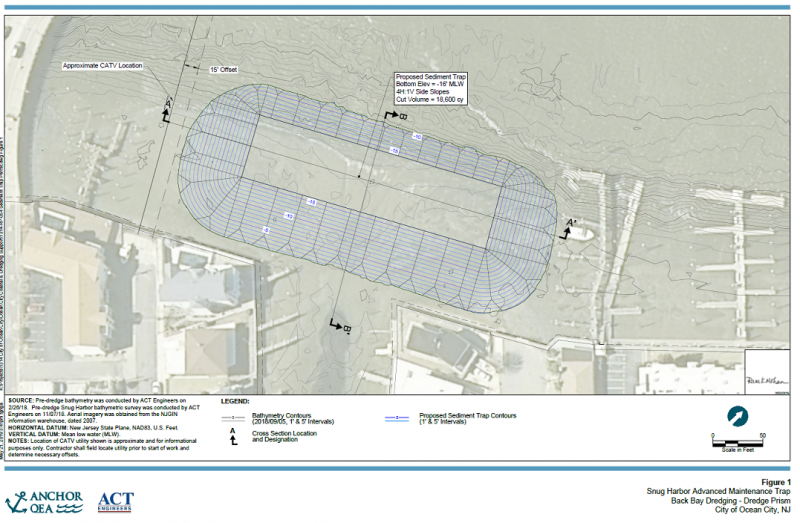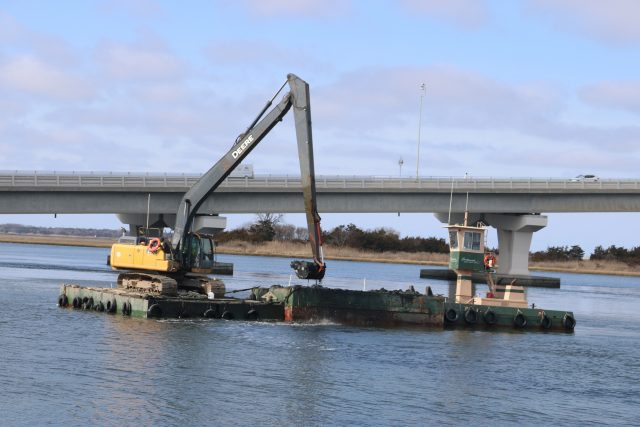By DONALD WITTKOWSKI
With each thrust of its giant metal claw, an excavator on a floating barge scoops out gobs of gooey black muck from the mouth of an Ocean City lagoon.
It may seem like a monotonous process, but the dredging work is part of an unprecedented project in New Jersey that may serve as a model for Ocean City to prevent its waterways from being choked with muddy sediment.
The city’s dredging contractor is digging an innovative “sediment trap” that will capture large amounts of silt in Snug Harbor, one of the most troublesome spots for mud and muck accumulating on the bottom of lagoons along the back bays.
Snug Harbor, a quaint lagoon off Bay Avenue between Eighth and Ninth streets, has experienced a chronic buildup of sediment over the years. It is a location that requires repeated dredging by the city to make it deep enough for bayfront homeowners to enjoy their boats.
Hoping to find a longer-term solution to the constant dredging of lagoons and channels, the city is experimenting with the underwater sediment trap to reduce the amount of silt buildup.
“The sediment trap is a groundbreaking concept that is a first in New Jersey. The idea is pretty simple: For accumulating silt to fill the hole outside the lagoon and not the lagoon itself,” city spokesman Doug Bergen explained.
If successful, the sediment trap could serve as a model for the dredging of other lagoons and channels in Ocean City. Mayor Jay Gillian said the city “is always looking for innovative ways to deliver better results at lower costs.”
“We’re experimenting with a groundbreaking concept that is a first in New Jersey. A deep sediment trap outside the mouth of Snug Harbor is designed to help reduce the frequency of re-dredging,” Gillian said in a statement.
The dimensions of the sediment trap are 340 feet long by 170 feet wide and 12 feet deep. It is expected to be completed by March 31, when the annual permitting window for dredging projects closes, Bergen said.
Essentially, it will be a large hole dug in the bottom of the channel that will capture the flowing sediment in the bay. It has also been described as a “bathtub.”
Dredging of the lagoons and channels along the back bays is an annual maintenance project costing millions of dollars. Gillian said the city is using a $1.7 million grant to help offset the cost this year.
Over the years, Ocean City has been working in partnership with the state and federal governments for millions of dollars in grant money for dredging projects.
At times, some of the shallow lagoons around town become virtual mudflats in spots. The dredging helps to free up boats that can be trapped at their slips at low tide because the lagoons and channels are clogged with mud and sediment.
Gillian has repeatedly said that the dredging projects will have far-reaching effects on the city by improving the waterways for local boaters, helping the marinas, increasing bayfront property values and making the lagoons safer for swimming.








